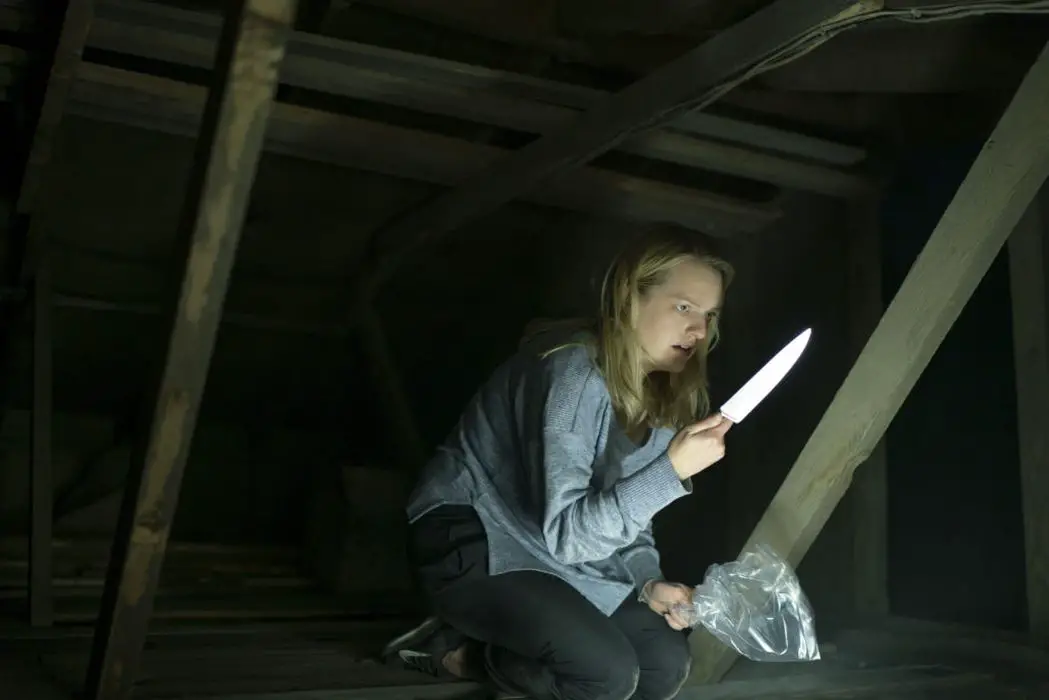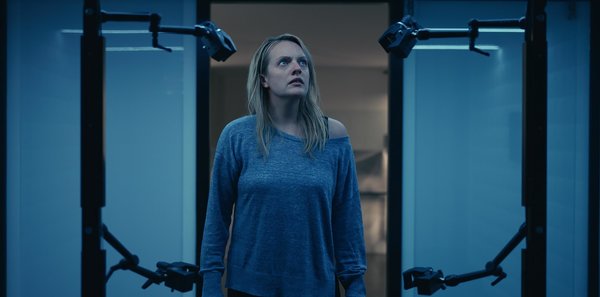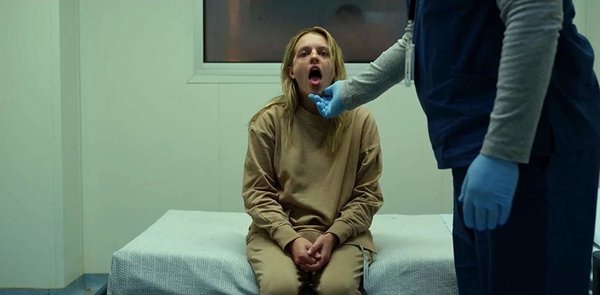THE INVISIBLE MAN: An Effective Modernization Of The Classic Monster

Joseph Dominguez is a Southern Californian with a degree in…
As children, being invisible seems to be among the first thoughts to come to mind when pondering which superpower we’d like to have. Of course, there are plenty of questions we fail to acknowledge when doing so. Let’s imagine: what would invisibility be like in the real world? And what would invisibility look like in the hands of a madman?
This is what H.G. Wells’s novel The Invisible Man sought to answer, and it’s what Leigh Whannell’s latest adaptation seems to perfectly translate for today’s day and and age. 2020’s The Invisible Man is filled with all the thrills, suspense, and storytelling we could’ve hoped for out of a Universal Monster, and it’s a gentle reminder that a connected movie universe is not always the best way to go about things.
Modernizing the Classic Tale
Whannell’s The Invisible Man tells the story of Cecilia Kass (Elisabeth Moss), a woman tormented by an abusive relationship. Her abuser, Adrian Griffin (Oliver Jackson-Cohen), is a scientist in the field of optics and will stop at nothing to be in Cecilia’s life. Soon after Cecilia escapes the relationship, it’s announced that Griffin has committed suicide — but as it goes, Cecilia realizes that perhaps Griffin isn’t dead, but instead, he’s devised a way to be invisible.

This is the essential plot to The Invisible Man, and although it can seem slowly paced at times, it’s a thrilling experience driven by the idea that someone is always on screen, except we can’t see them.
Capturing Psychological Horror
When we think of successful horror films of the 21st century we tend to consider the likes of Hereditary, The Witch, and Jordan Peele’s Get Out. While using similar tactics as these cult favorites, Whannell also implements his personal creativity to build a setting and tone that’s sure to make your pupils dilate and your body flinch (in the best of ways).
The Invisible Man works on many levels, and it doesn’t rely on jump scares to get under the audiences’ skin. Instead, it becomes a psychological success because at a certain point it’s easy to believe that a cheap scare or a pop-up is on its way — throughout my viewing experience of the second act, it was hard to shake the idea that someone was on screen, I just couldn’t see it.

A lot of this could be attributed to the intricate camera work of the film. If you’ve seen Whannell’s previous gem, Upgrade, you’ll have an idea of how inventive his tactics could be. The way he chooses to have his cameras aimed and panned add a deeper layer to the suspense being felt.
As Moss’s Cecilia does simple tasks like fix up her room or cook a meal, the camera captures long shots typically meant for multiple people on screen, but frequently, Cecilia is all we get. The camera also pans to capture different areas of the room that make it seem like it’s either following someone or indicating that someone is present. It’s easy to compare the feeling of watching The Invisible Man with the common belief that someone is watching us when we’re alone.
Grounding the World of The Invisible Man
Creating a psychological horror is no easy feat, and plenty of the praise could go to the people behind the scenes, but conveying these elements successfully could not be achieved without believable performances. Elisabeth Moss’s performance ranges from subtle tension to full on explosiveness. Her fear and seeming insanity radiates onto the audience in a way that’s comparable to Toni Collette in Hereditary.
At times, it’s even difficult to distinct fiction from reality, and you may begin to empathize with the other characters in the film as Cecilia loses touch with reality — all of whom offer worthy performances as well. Both the portrayals and direction help to justify the script on an emotional level.

As mentioned, the film is also captured beautifully, and the set design and cinematography further help to elevate it. We don’t get dull shades seen in every other horror film, but instead we get shots with purpose and complementing colors and lights that are at times awe-striking. The new design of the invisible man is also successfully modernized, perhaps even giving some its viewers a sense of trypophobia.
It’s also interesting to note that sound serves a great purpose here, or rather, the lack of it does. The score often builds before an abrupt stop, and plenty of the scenes are completely silent which works wonderfully to help build the fear and suspense.
So, the film is undoubtedly successful in a majority of departments; however, I will say, The Invisible Man can seem like an overlong film. The pacing serves a purpose, but the beats of the movie can feel too similar to one another, nearly outstaying their welcome. Also, the audience may feel like there’s a disconnect when it comes to certain things within the context of the film.
The movie sometimes uses camera footage, yet no one acknowledges it as to find answers. It’s a small quibble that may leave viewers annoyed or at least wondering why camera footage is even offered to begin with.
The Invisible Man: Conclusion
From its opening scene of a mansion overlooking the ocean to its anxiety-inducing conclusion, The Invisible Man brings Universal Monsters to a whole new level. It’s beautifully crafted with creative use of cameras and sound, and I hope it brings director Leigh Whannell the praise he deserves. Although there are certain issues related to pacing and continuity, I believe The Invisible Man is a film that will be appreciated for time and time to come.
The Invisible Man was released in US and UK cinemas on February 28, 2020.
Does content like this matter to you?
Become a Member and support film journalism. Unlock access to all of Film Inquiry`s great articles. Join a community of like-minded readers who are passionate about cinema - get access to our private members Network, give back to independent filmmakers, and more.
Joseph Dominguez is a Southern Californian with a degree in psychology and an immense love for pop culture.












